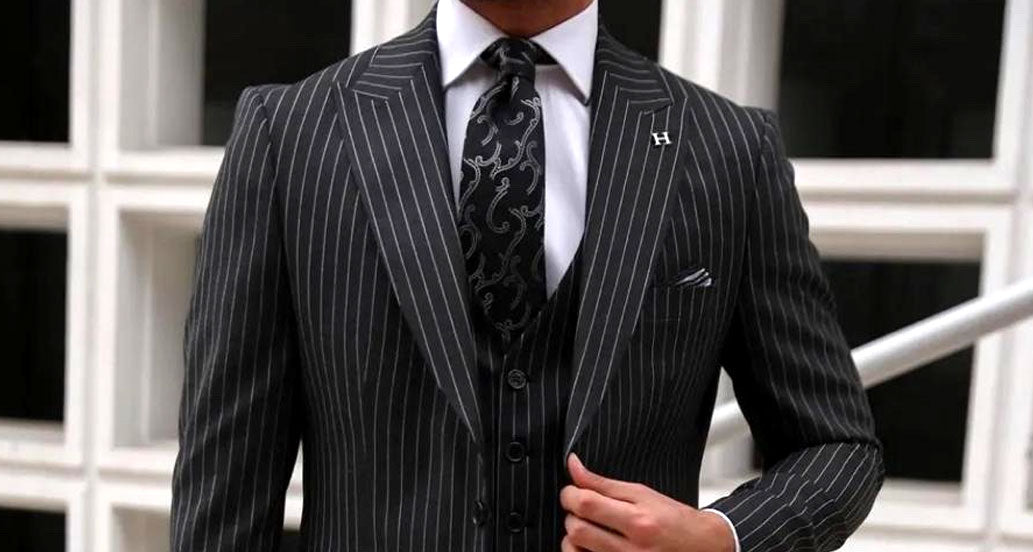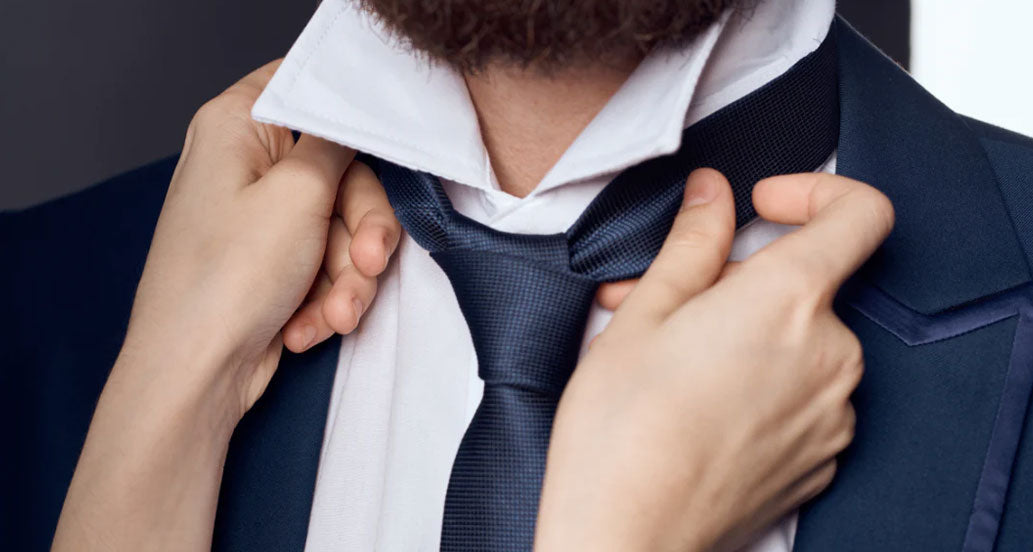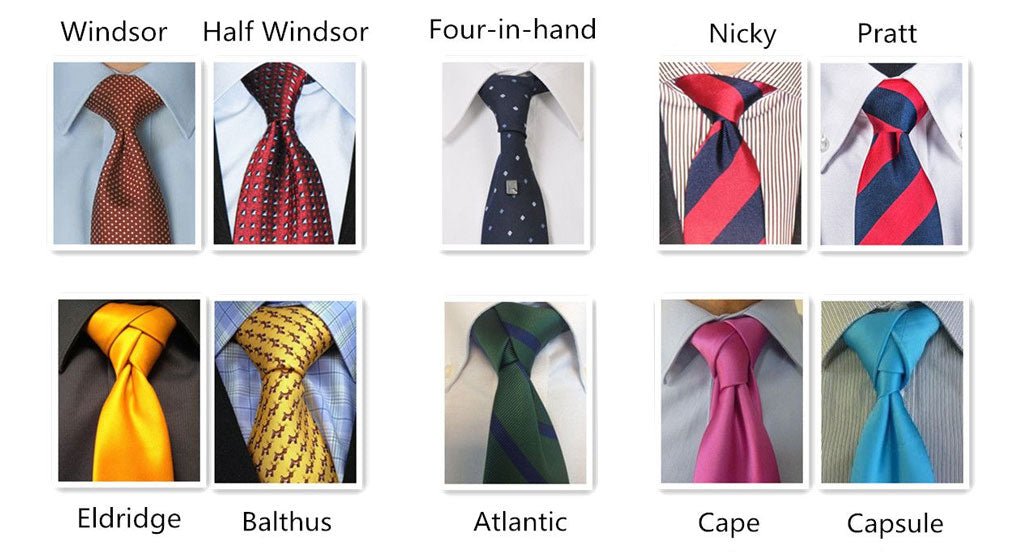When it comes to men's fashion, mastering the art of tying a necktie is essential. Whether you're preparing for a business meeting or a formal event, knowing how to tie different knots can elevate your style and make a lasting impression. This comprehensive guide covers everything you need to know about tie knots, from the classic Half Windsor to the intricate Eldredge.
Wearing a tie is more than just an accessory; it's a statement of style and sophistication, elevating one's look at formal events. Despite its necessity, many individuals struggle with tying necktie knots. Even among those who can tie a tie, they stick to one type, unaware of the variety of tie knots available. Starting with a basic simple tie knot or opting for the larger Windsor knot offers versatility in style.
Learning different ways of how to properly tie a necktie allows you to match different styles with your shirt collar. From the fancy tie knots to the simple regular ones, you can try the ones that suit your style. Whether it's a formal event or a casual affair, a well-tied necktie speaks volumes about your style and attention to detail. In this article, we'll delve into four essential ways to tie a necktie every gentleman should master and provide step-by-step instructions for each. So, how exactly do you tie a tie?
Types of Tie Knots
If you want to learn how to put on a tie, you can start with a simple tie knot and then try other variations. But the essential part is practicing different styles and following all the steps to tie a tie. We will look at four different types of knots here.
The Half Windsor Knot
Formal events and business meetings are a few places to wear this necktie. Tying a tie need not be complex, and mastering a few steps allows you to effortlessly create a half-Windsor knot.
- Begin by placing the tie around your neck, ensuring the longer and wider end hangs on the right side, while the shorter end remains free on the left.
- Take the longer end and cross it over the narrower end on the left.
- Pull the wider end through the loop from beneath the shorter end, threading it through the space between the collar and the necktie, moving from back to front.
- Next, guide the wider end toward the left side, crossing it under the narrow end.
- Pass the longer piece over the shorter end, moving from the left to the right side, allowing it to pass over the forming knot.
- Pass the longer end through the neck loop from behind to the front.
- Pull the wider end to the right direction, simultaneously pulling it downward as you push it through the bottom of the neck loop.
- Finally, pass the wider end through the loop formed between the knot and the necktie, then pull it down firmly to secure and tighten the knot.
The Double Windsor Knot
Mastering the technique of how to tie a Windsor knot properly is essential. The Double Windsor knot, also known as the full knot, is a formal tie knot favored by gentlemen, especially those with broader necks. The Windsor is a bold knot best applied to wider neckties and spread collars.It is often large with a symmetrical knot that sets it apart from others. Here is how to tie a double Windsor knot.
- Begin by draping the tie around your neck, positioning it beneath the shirt collar. Ensure the wide end hangs lower than the narrow end.
- Take the wide end and cross it over the narrow end. Then, pass it back through the neck loop and the portion of the tie near the neck.
- Holding the narrow end, grasp the wide part and pass it from underneath the narrow end. This forms the foundation of the Double Windsor knot, though it remains half-finished at this stage.
- Repeat the same process on the other side to mirror the knot's appearance. Create a loop by passing the wide end over the narrow end.
- With the loop formed, use your free hand to open the top of the loop and pass the wide end of the tie through it.
- Pull the wide end downwards while adjusting and centering the knot as needed using your other hand to tighten the Double Windsor knot securely.
The Four in Hand
The Four-in-Hand knot is a widely popular and versatile tie style, known for its slender yet noticeable appearance, usually worn on a spread collar shirt. Here is a step-by-step guide on how to tie a necktie using the four-in-hand style:
- Begin by wrapping the tie around your neck, ensuring the wide end hangs approximately 12 inches longer than the shorter narrow end.
- Cross the longer end over the shorter end.
- Loop the wide end around the narrow end of the necktie, passing it over the front.
- Pull the wide end from beneath the loop, bringing it forward from the bottom.
- Using your index finger, gently draw the wide end downward through the knot at the front.
- Carefully center and tighten the knot to achieve the desired appearance.
The Eldredge Knot
This is one of the necktie knots renowned for its elegant and sophisticated look, especially complementing spread collars. Here's a detailed guide on how to tie an Eldredge tie knot:
- Position the tie around your neck, ensuring the longer and wider end hangs on the right, approximately 2 inches longer than the narrow end hanging on the left.
- Holding the longer end of the tie, cross it over to the narrower end on the left.
- Pull the wide end in the loop from under the shorter end and pass it through the hole between the collar and the necktie from behind to the front.
- Again, pull the wide end towards the left side and then cross it from underneath the narrow end as you pull the wide end back to the right.
- Now pass the wide end to the back of the loop from the front and back up
- Pull the wide end in the right direction while tugging it downwards as you push it through the bottom of the neck loop.
- Finally, pass the wide end through the loop formed between the knot and the necktie, pulling it down to tighten the knot.
What is The Best Knot
When seeking the best knot for tie, the answer isn't straightforward as there's no universally 'best tie knots'. Each tie style has a unique appearance that caters to individual preferences and occasions. For beginners who want to learn how to tie a tie in an effortless style, starting with the Four-in-Hand knot is recommended. However, those seeking more intricate tie knots might prefer the Full Windsor knot.
Consider the occasion and your shirt when deciding on the knot. For formal events, mastering the Full Windsor or Half Windsor knot might be preferable. For less formal occasions, the Four-in-Hand or the intricate Eldredge tie knot can be more fitting.
Experiment with different knots to find your signature style, and remember, practice makes perfect. Explore, enjoy, and elevate your tie game!














